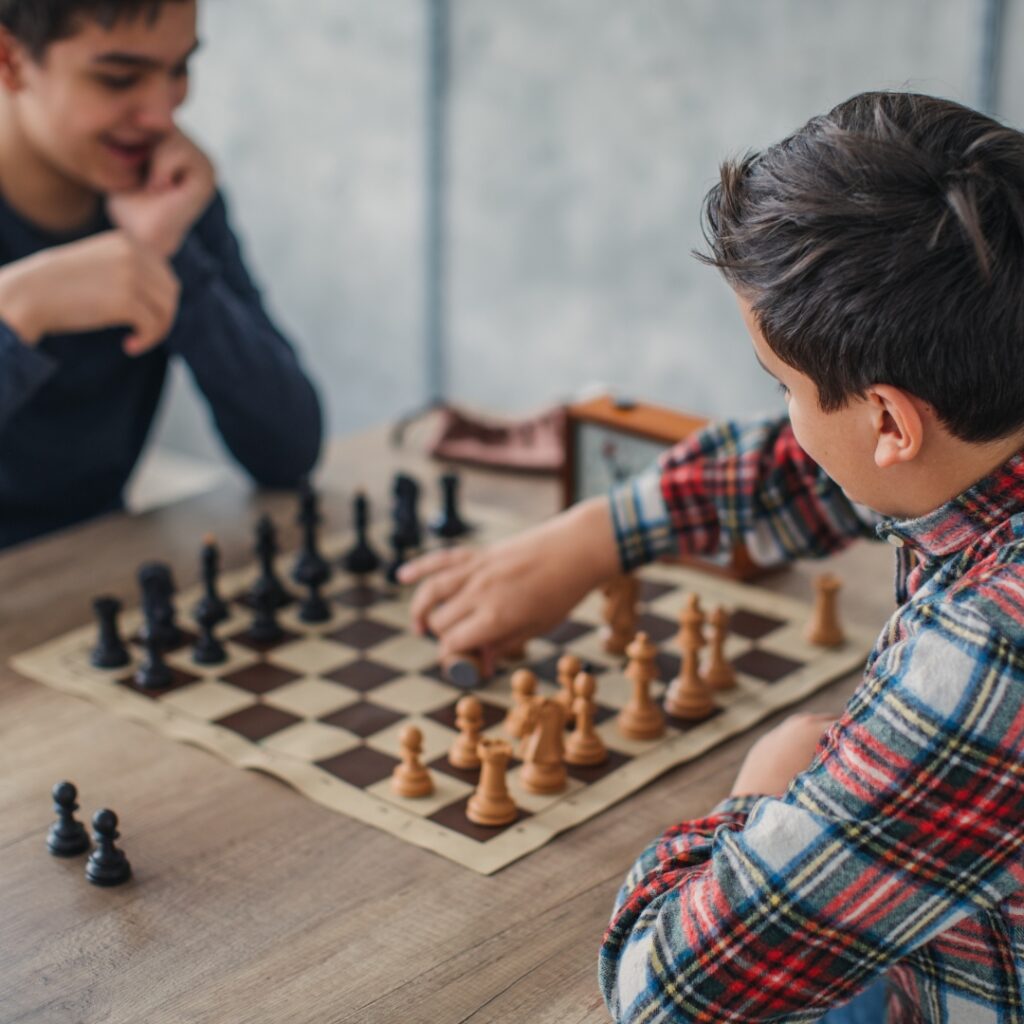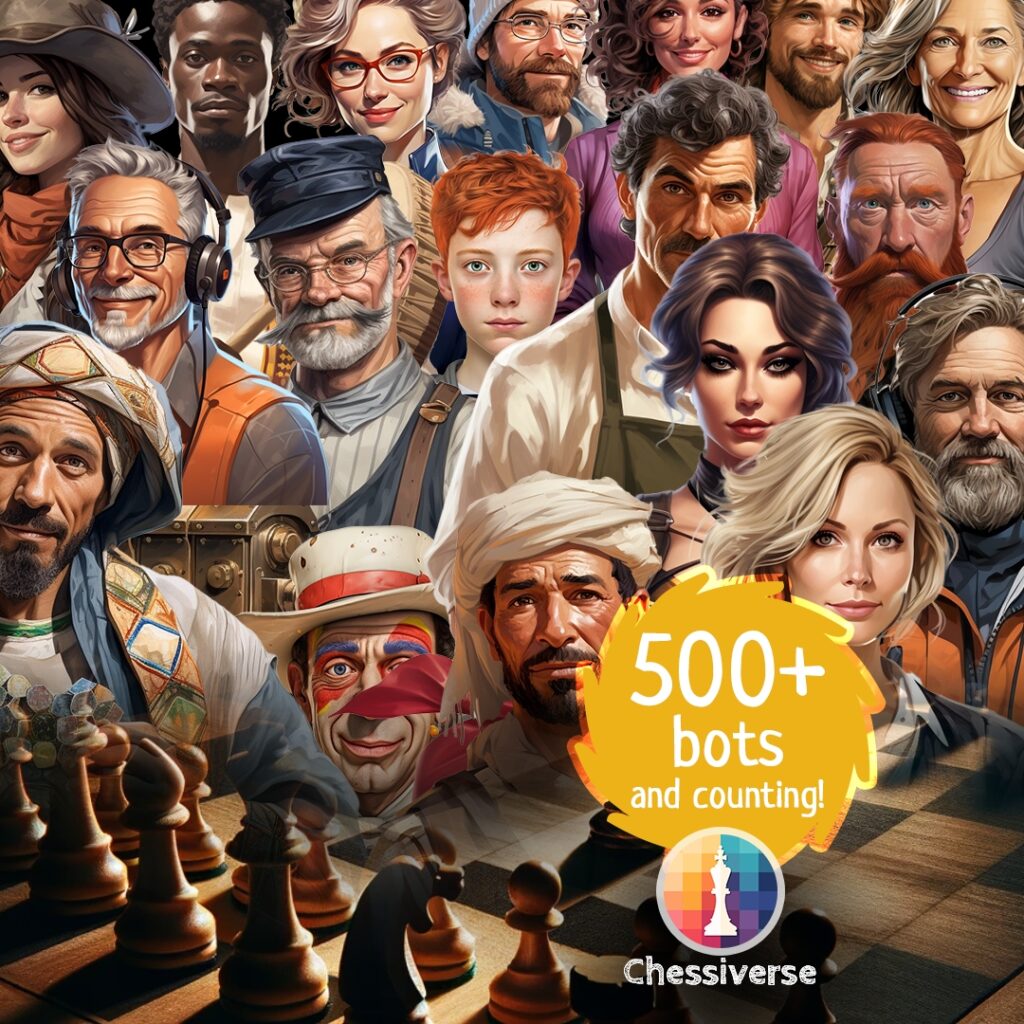Table of Contents
- Introduction
- Types of chess games
- Open Games
- Semi-Open Games
- Closed Games
- Strategic Implications of Each Game Type
- Chessiverse: A Platform to Explore and Master Different Game Types
- Conclusion
1. Introduction
In the intricate world of chess, the type of game you engage in whether open, semi-open, or closed can dramatically shape the nature of the battle that unfolds. Each game type comes with its own set of challenges and opportunities, and mastering them is essential for any serious player. This article delves into these three fundamental categories, providing insights into their characteristics and strategic implications. Additionally, we’ll explore how Chessiverse, a unique platform with over 500 chess bots, can help players enhance their understanding and skills in these different game types.

2. Types of chess games
Open Games
Open games are characterized by a rapid and dynamic start, where both players advance their king’s pawn two squares (1.e4 e5). This creates an open center, leading to quick piece development and tactical opportunities.
- Examples: The Ruy-Lopez (1.e4 e5 2.Nf3 Nc6 3.Bb5), the Italian Game (1.e4 e5 2.Nf3 Nc6 3.Bc4), and the Scotch Game (1.e4 e5 2.Nf3 Nc6 3.d4) are classic examples of open games.
- Characteristics: Open games are often rich in tactical motifs, with frequent exchanges and aggressive play. Players need to be well-prepared for complex variations and quick calculations.
Semi-Open Games
In semi-open games, one player advances the king’s pawn (1.e4), but the opponent chooses a different response, such as 1…c5 (Sicilian Defense) or 1…e6 (French Defense). This leads to asymmetrical pawn structures and diverse strategic themes.
- Examples: The Sicilian Defense (1.e4 c5), the French Defense (1.e4 e6), and the Caro-Kann Defense (1.e4 c6) are prominent semi-open games.
- Characteristics: These games offer a mix of tactical and strategic play, often leading to unbalanced positions. Mastery of pawn structures and flexibility in strategy are key in semi-open games.
Closed Games
Closed games are defined by a blocked center, where pawns are locked in place, leading to slower, more strategic play. This usually happens when neither player pushes their king’s pawn to the fourth rank early on.
- Examples: The Queen’s Gambit Declined (1.d4 d5 2.c4 e6), the King’s Indian Defense (1.d4 Nf6 2.c4 g6), and the French Defense (1.e4 e6 2.d4 d5) can lead to closed game structures.
- Characteristics: Closed games emphasize long-term strategic planning and positional maneuvering. Players need patience and a deep understanding of the subtleties of piece placement and pawn structure to succeed.

3. Strategic Implications of Each Game Type
The type of game open, semi-open, or closed significantly influences the strategies you should adopt:
- Open Games: Favor tactical players who excel in quick calculations and aggressive play.
- Semi-Open Games: Require versatility, as they blend tactical and strategic elements.
- Closed Games: Demand a deep understanding of positional play, where patience and long-term planning are crucial.
Understanding these differences allows players to tailor their approach to their strengths, giving them a competitive edge in various scenarios.
4. Chessiverse: A Platform to Explore and Master Different Game Types
Chessiverse offers a unique environment for players to practice and master open, semi-open, and closed games. With over 500 chess bots, each with its own personality and playing style, Chessiverse provides endless opportunities to explore these different game types. Whether you’re looking to refine your tactical skills in open games or develop your strategic thinking in closed games, Chessiverse has a bot designed to challenge and improve your abilities.

5. Conclusion
Mastering the different types of chess games open, semi-open, and closed is a crucial step in becoming a well-rounded player. Each type presents unique challenges and opportunities, requiring different strategies and skills. With the help of platforms like Chessiverse, players can practice and refine their techniques in a supportive and dynamic environment, ensuring they are well-prepared for any chess encounter. Whether you’re aiming for tactical brilliance or strategic depth, Chessiverse is your go-to platform for chess improvement.
